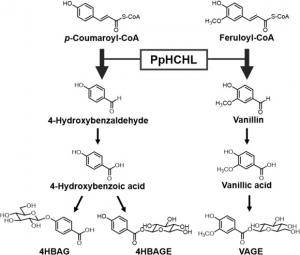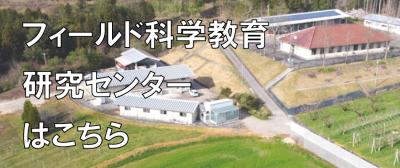本文
【地域資源開発学科】タケ培養細胞で有用 物質生産!
印刷用ページを表示する
2020年8月28日更新
【地域資源開発学科】荻田教授の研究が学術論文として採択されました
本研究は,Journal of Bioscience and Bioengineering誌に掲載されます。
Bioproduction of glucose conjugates of 4-hydroxybenzoic and vanillic acids using bamboo cells transformed to express bacterial
Naoki Kitaoka, Taiji Nomura, Shinjiro Ogita, Yasuo Kato
Rational metabolic-flow switching, which we proposed recently, is an effective strategy to produce an exogenous high-value natural product using transformed plant cells; the proof of this concept was demonstrated using bamboo (Phyllostachys nigra; Pn) cells as a model system. Pn cells were transformed to express 4-hydroxycinnamoyl-CoA hydratase/lyase of Pseudomonas putida KT2440 (PpHCHL), which catalyzes the formation of 4-hydroxybenzaldehyde and vanillin from p-coumaroyl-CoA and feruloyl-CoA, respectively. The PpHCHL-transformed cells accumulated glucose conjugates of 4-hydroxybenzoic acid and vanillic acid, indicating that the PpHCHL products (aldehydes) were further metabolized by inherent enzymes in the Pn cells. The production titers of 4-hydroxybenzoic acid glucose ester, vanillic acid glucose ester, and 4-hydroxybenzoic acid glucoside reached 1.7, 0.17, and 0.14 g/L at the maximum, respectively. These results proved the versatility of Pn cells for producing vanillin-related compounds based on rational metabolic-flow switching.
新たな代謝ルートを植物細胞の中で構築できる合理的代謝フロースィッチング注)の手法を、フェニルプロパノイド系化合物生産の宿主として独自に開発したタケ培養細胞に応用しました。Pseudomonas putidaの4-hydroxycinnamoyl-CoA hydratase/lyaseを発現する組換タケ培養細胞は、有用な天然香料であるバニリン関連代謝物を生産できることを示しました。本研究は、富山県立大学工学部生物工学科植物機能工学講座との共同研究成果です。

 大学概要
大学概要
 学部・大学院・専攻科
学部・大学院・専攻科
 学生生活・就職支援
学生生活・就職支援
 研究・地域連携・国際交流
研究・地域連携・国際交流
 入試情報
入試情報






